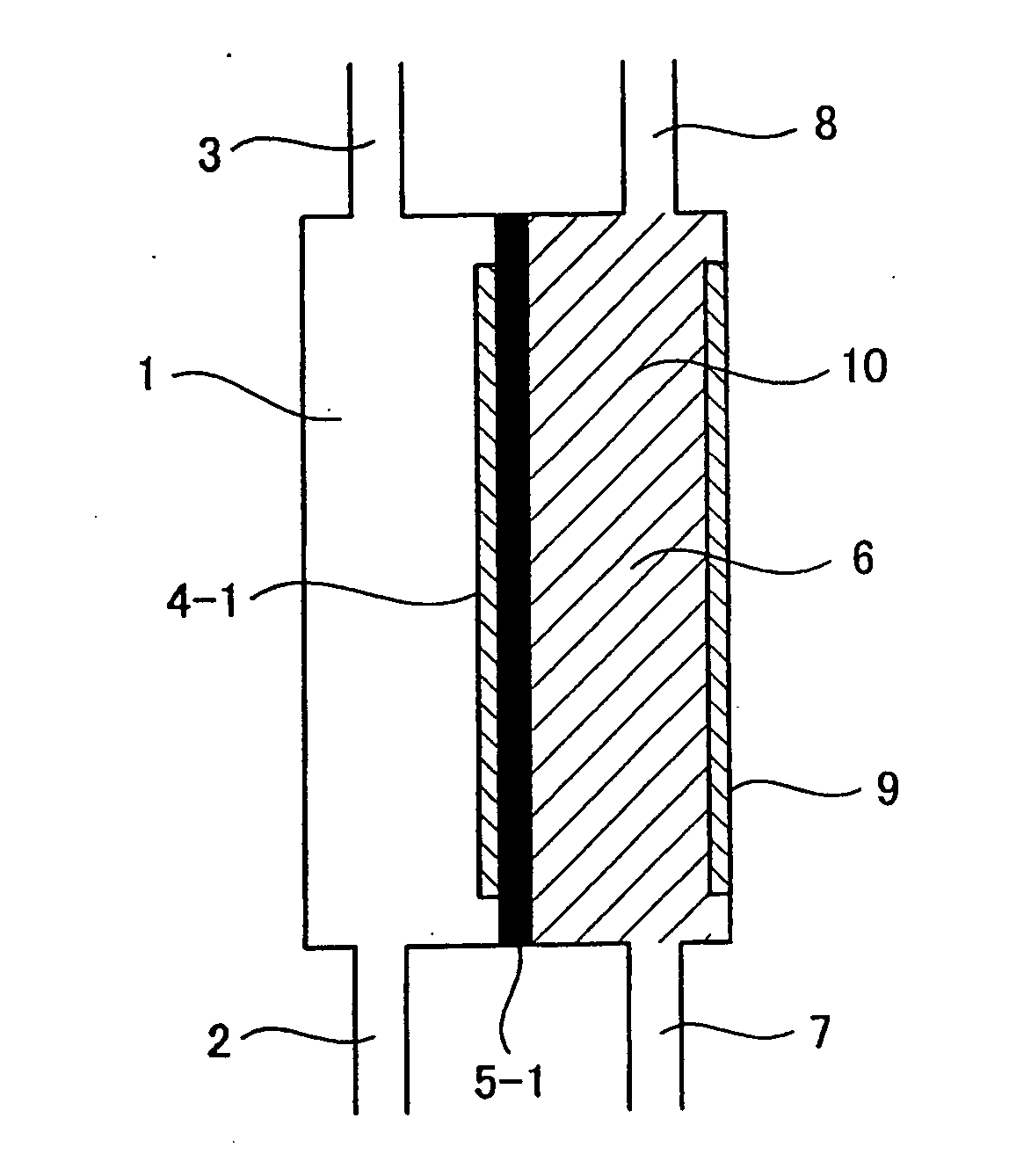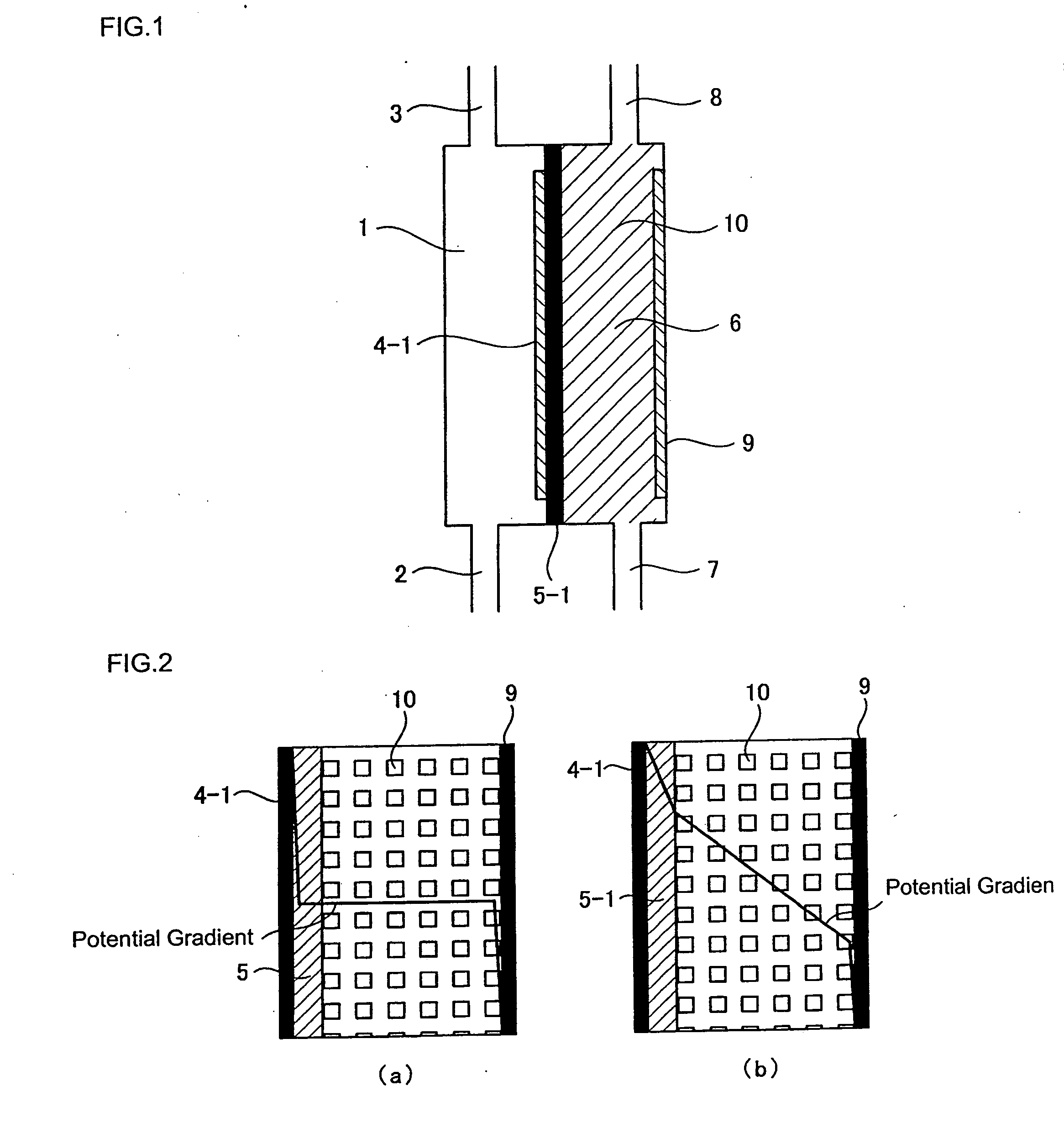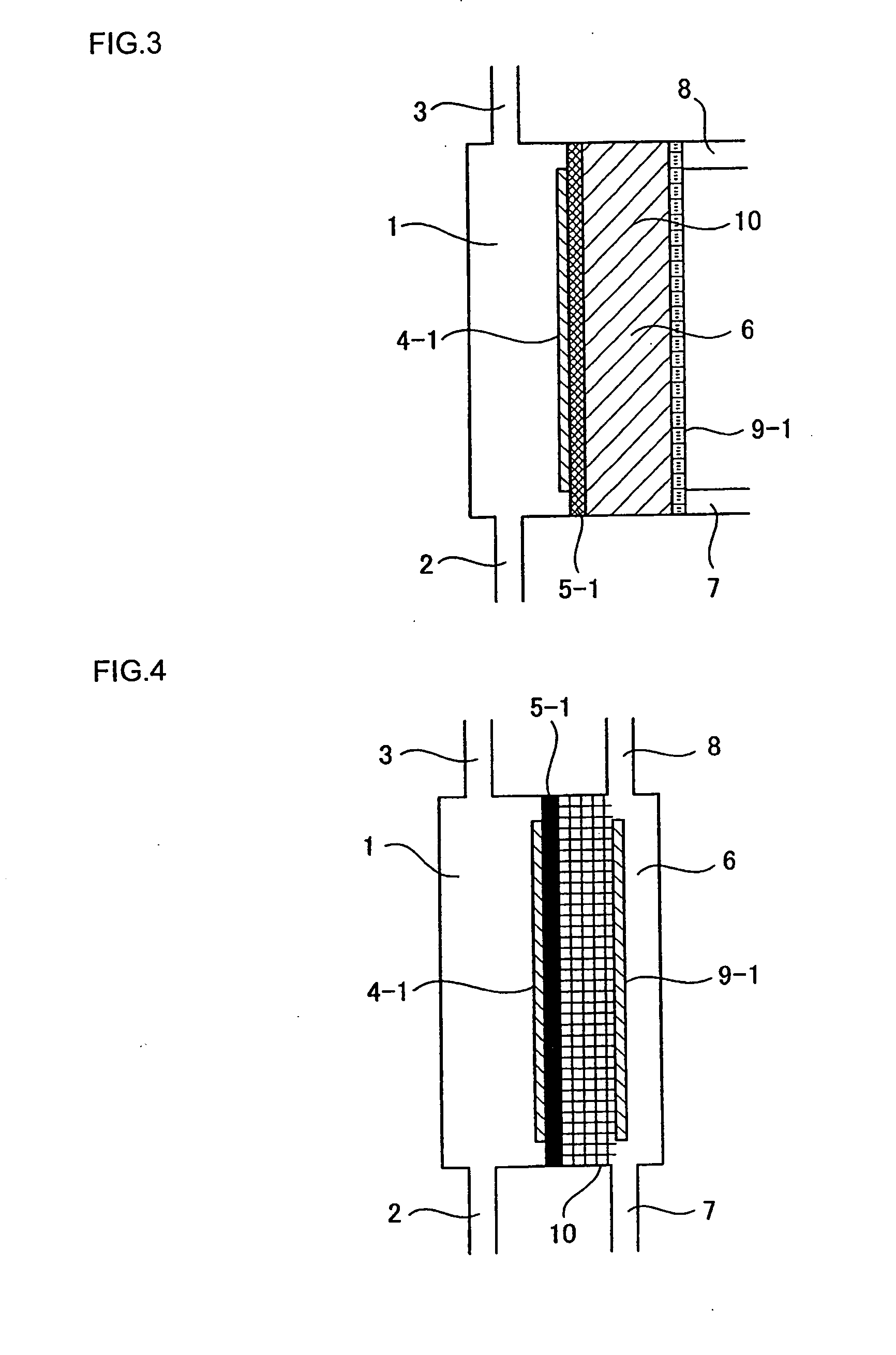Apparatus and method for producing hydrogen-dissolved drinking water
a technology of drinking water and apparatus, which is applied in the direction of membranes, filtration separation, separation processes, etc., can solve the problems of inability to use hydrogen gas cylinders in the home, inability to produce cathode-electrolyzed water as drinking water, and high method cost, and achieve long-term dissolved hydrogen concentration and high dissolved hydrogen concentration
- Summary
- Abstract
- Description
- Claims
- Application Information
AI Technical Summary
Benefits of technology
Problems solved by technology
Method used
Image
Examples
example 1
[0104]The relationship among the pH of cathode-electrolyzed water, the structure of the conventional electrolytic cell illustrated in FIG. 19, and the structure of the electrolytic cell according to the present invention illustrated in FIG. 1 was confirmed. The dimensions of the electrodes in the electrolytic cells were 8 cm×6 cm. A fluorine-based cation exchange membrane was used for the diaphragm. A platinum-plated titanium plate was used for the electrodes. However, a water-permeable electrode provided with a plurality of through holes (3 mm φ) as illustrated in FIG. 9 was used for the anode electrode in the electrolytic cell of FIG. 1. In addition, for the electrolytic cell illustrated in FIG. 1, a cation exchange resin 10 was filled between a diaphragm 5-1 formed from a fluorine-based cation exchange membrane manufactured by Dupont and the cathode electrode to a thickness of 5 mm. As the raw water, water obtained by treating tap water using a reverse osmosis membrane filter was...
example 2
[0106]In the electrolytic cell having the structure illustrated in FIG. 1, a water-permeable anode electrode provided with a plurality of through holes (3 mm φ) as illustrated in FIG. 9 and a cathode electrode were used. These electrodes had dimensions of 8 cm×6 cm and an electrode surface area of 48 cm2. The cathode electrode was a flat plate made from platinum-plated titanium that did not have through holes. A fluorine-based cation exchange membrane manufactured by Dupont was used as the diaphragm. A cation exchange resin was filled between the diaphragm and the cathode electrode. The thickness of the ion-exchange resin layer was 5 mm. The cathode-electrolyzed water was passed through a 0.1 micron filter to separate the water into hydrogen molecules in the form of macroscopic gas bubbles (GH) and hydrogen molecules dissolved in particulate form (SH). SH+GH is the total hydrogen amount produced by electrolysis converted from the current. The current was varied between 0.2 and 9.5 A...
example 3
[0108]Using the same electrolytic cell as in Example 2, the flow rate in the cathode electrode chamber and the change in concentration of the dissolved hydrogen molecules were measured. The current was set at 5 A. The water supplied to the cathode electrolysis chamber was pure water of about 1 μS / cm. The effects of flow rate on the ratio (SH / (SH+GH)) between the hydrogen molecule concentration (SH+GH) converted from the current value and the dissolved hydrogen molecule concentration (SH) in the cathode-electrolyzed water passed through a 0.1 micron filter were plotted. The pH of the cathode-electrolyzed water at this time was 6.1 to 6.7. Measurement data concerning the dissolved hydrogen are shown in FIG. 8. From FIG. 8, it can clearly be seen that if the flow rate is increased, the ratio of the dissolved hydrogen concentration increases. However, although the electrolysis voltage was about 9V when the flow rate was 0.1 L / min, the electrolysis voltage was 58V when the flow rate was ...
PUM
| Property | Measurement | Unit |
|---|---|---|
| conductivity | aaaaa | aaaaa |
| current density | aaaaa | aaaaa |
| pH | aaaaa | aaaaa |
Abstract
Description
Claims
Application Information
 Login to View More
Login to View More - R&D
- Intellectual Property
- Life Sciences
- Materials
- Tech Scout
- Unparalleled Data Quality
- Higher Quality Content
- 60% Fewer Hallucinations
Browse by: Latest US Patents, China's latest patents, Technical Efficacy Thesaurus, Application Domain, Technology Topic, Popular Technical Reports.
© 2025 PatSnap. All rights reserved.Legal|Privacy policy|Modern Slavery Act Transparency Statement|Sitemap|About US| Contact US: help@patsnap.com



